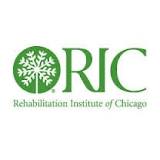Altering Activation Patterns Post-stroke
| Status: | Recruiting |
|---|---|
| Conditions: | Neurology, Neurology |
| Therapuetic Areas: | Neurology |
| Healthy: | No |
| Age Range: | 18 - 80 |
| Updated: | 1/19/2019 |
| Start Date: | November 2015 |
| End Date: | October 2022 |
| Contact: | Kristen M Triandafilou, MS |
| Email: | triandafilou@ricres.org |
| Phone: | 312-238-2993 |
Altering Activation Patterns in the Distal Upper Extremity After Stroke
This study evaluates a new rehabilitation approach for stroke survivors in the chronic phase
of recovery in which the combination of drug therapy (cyproheptadine) and active movement
practice (AMP) is used to encourage increased voluntary muscle control and strength.
of recovery in which the combination of drug therapy (cyproheptadine) and active movement
practice (AMP) is used to encourage increased voluntary muscle control and strength.
In this four arm parallel design you will be randomly assigned to one of 4 groups:
Group 1) cyproheptadine and active movement therapy, Group 2) placebo and active movement
therapy, Group 3) cyproheptadine and passive stretching, or Group 4) placebo and passive
stretching.
The groups will be blinded so neither you nor the research staff (or even the study doctor)
will know which drug (Cyproheptadine or placebo) you receive. Only the RIC pharmacist will
have access to this information until all participants complete the entire study. Although
you and the research staff administering the training sessions will know if you have been
assigned to the active movement practice (AMP) or passive cyclical stretching group, it is
important not to discuss this information with the rater (evaluator) or the study doctor.
Cyproheptadine is an anti-serotonergic and anti spastic agent. It is expected to reduce the
unwanted muscle hyper excitability (one measure of spasticity) common after stroke.
During the course of the treatment you will be required to make several visits per week to
RIC to either be evaluated or participate in the treatment sessions. Evaluations last
approximately 2 hours and will be performed at the beginning of weeks 1, 2, 3 and 4, during
the middle of treatment (beginning of week 7), at the end of training (beginning of week 10)
as well as a final follow-up visit one month after the end of treatment (beginning of week
14). The training sessions will occur from weeks 4 through week 9 and will involve 1.5-hr.
sessions (1 hr training plus setup time) 3 times per week.
The investigators hypothesize that the group receiving the combined cyproheptadine and active
movement therapy will have better outcomes than the groups receiving cyproheptadine or active
movement therapy alone.
Group 1) cyproheptadine and active movement therapy, Group 2) placebo and active movement
therapy, Group 3) cyproheptadine and passive stretching, or Group 4) placebo and passive
stretching.
The groups will be blinded so neither you nor the research staff (or even the study doctor)
will know which drug (Cyproheptadine or placebo) you receive. Only the RIC pharmacist will
have access to this information until all participants complete the entire study. Although
you and the research staff administering the training sessions will know if you have been
assigned to the active movement practice (AMP) or passive cyclical stretching group, it is
important not to discuss this information with the rater (evaluator) or the study doctor.
Cyproheptadine is an anti-serotonergic and anti spastic agent. It is expected to reduce the
unwanted muscle hyper excitability (one measure of spasticity) common after stroke.
During the course of the treatment you will be required to make several visits per week to
RIC to either be evaluated or participate in the treatment sessions. Evaluations last
approximately 2 hours and will be performed at the beginning of weeks 1, 2, 3 and 4, during
the middle of treatment (beginning of week 7), at the end of training (beginning of week 10)
as well as a final follow-up visit one month after the end of treatment (beginning of week
14). The training sessions will occur from weeks 4 through week 9 and will involve 1.5-hr.
sessions (1 hr training plus setup time) 3 times per week.
The investigators hypothesize that the group receiving the combined cyproheptadine and active
movement therapy will have better outcomes than the groups receiving cyproheptadine or active
movement therapy alone.
Inclusion Criteria:
- Chronic, severe hand hemiparesis resulting from a single stroke (Chedoke- McMaster
Stroke Assessment: Stage of Hand 2 or 3)
- Single stroke occurring at least 6 months prior to enrollment
- Spasticity
- Capacity to provide informed consent
Exclusion Criteria:
- Excessive pain in paretic upper limb
- Hemispatial neglect (as assessed by the Behavioral Inattention Test)
- Apraxia (as assessed by the FABERS battery)
- Botulinum toxin injection in the upper extremity within the past 6 months
- Introduction of new anti-spasticity medication within the past 6 months
- Orthopaedic impairments
- History of seizure disorder
- Other major health impairment
We found this trial at
1
site
345 E Superior St
Chicago, Illinois 60611
Chicago, Illinois 60611
(312) 238-1000

Phone: 312-238-2993
Rehabilitation Institute of Chicago The Rehabilitation Institute of Chicago (RIC) is an independent, 501(c)3, non-profit...
Click here to add this to my saved trials